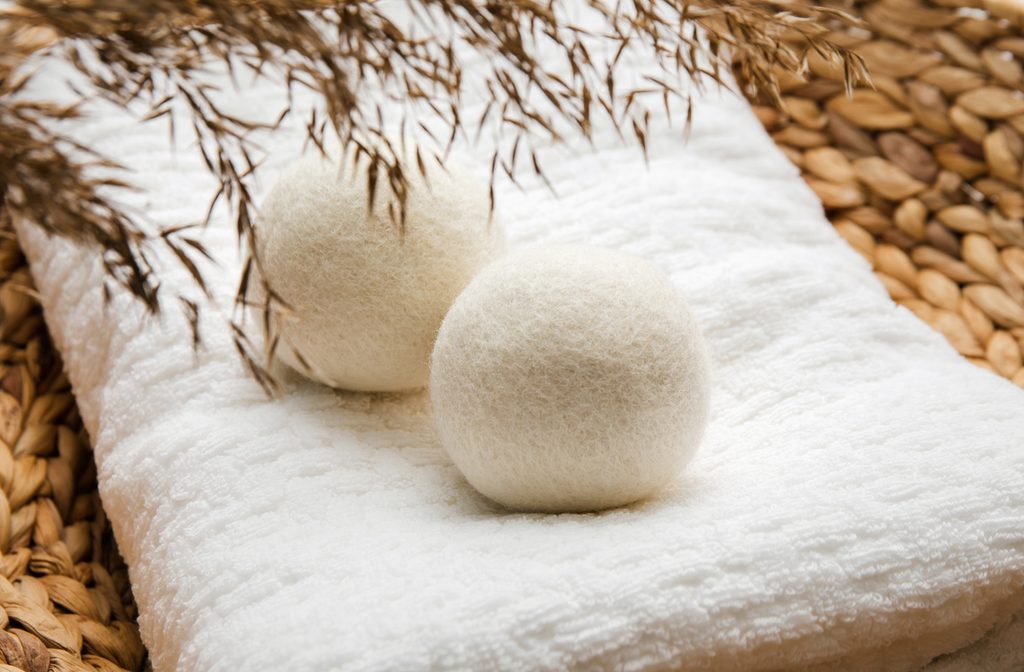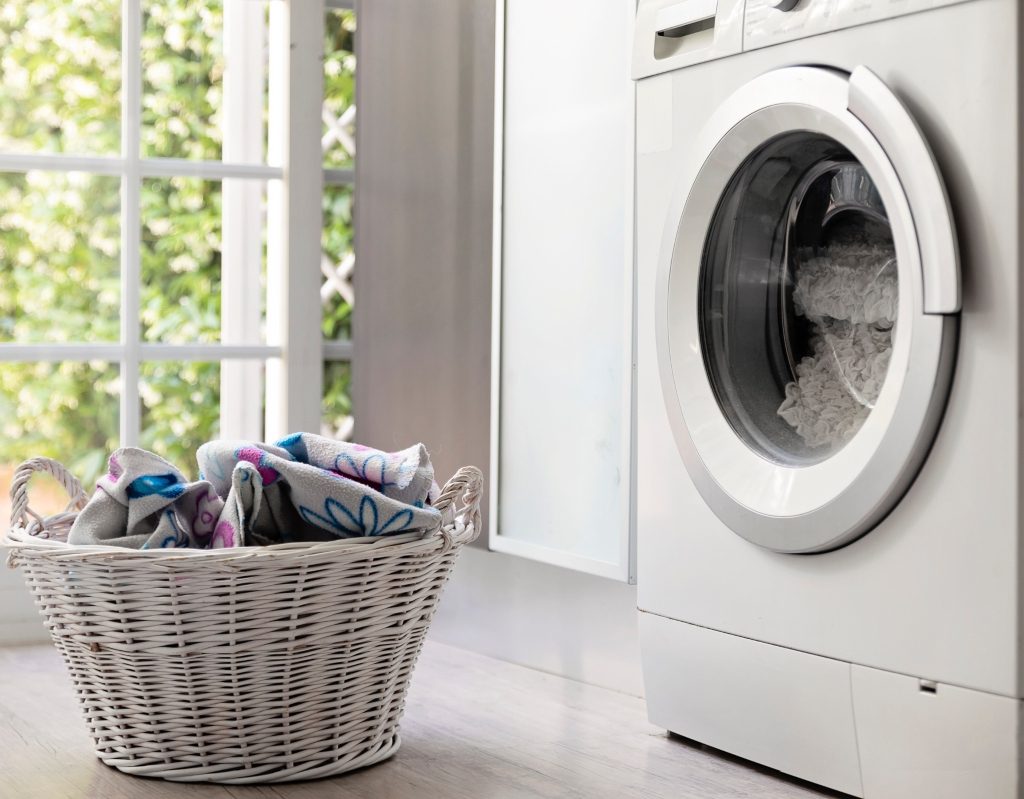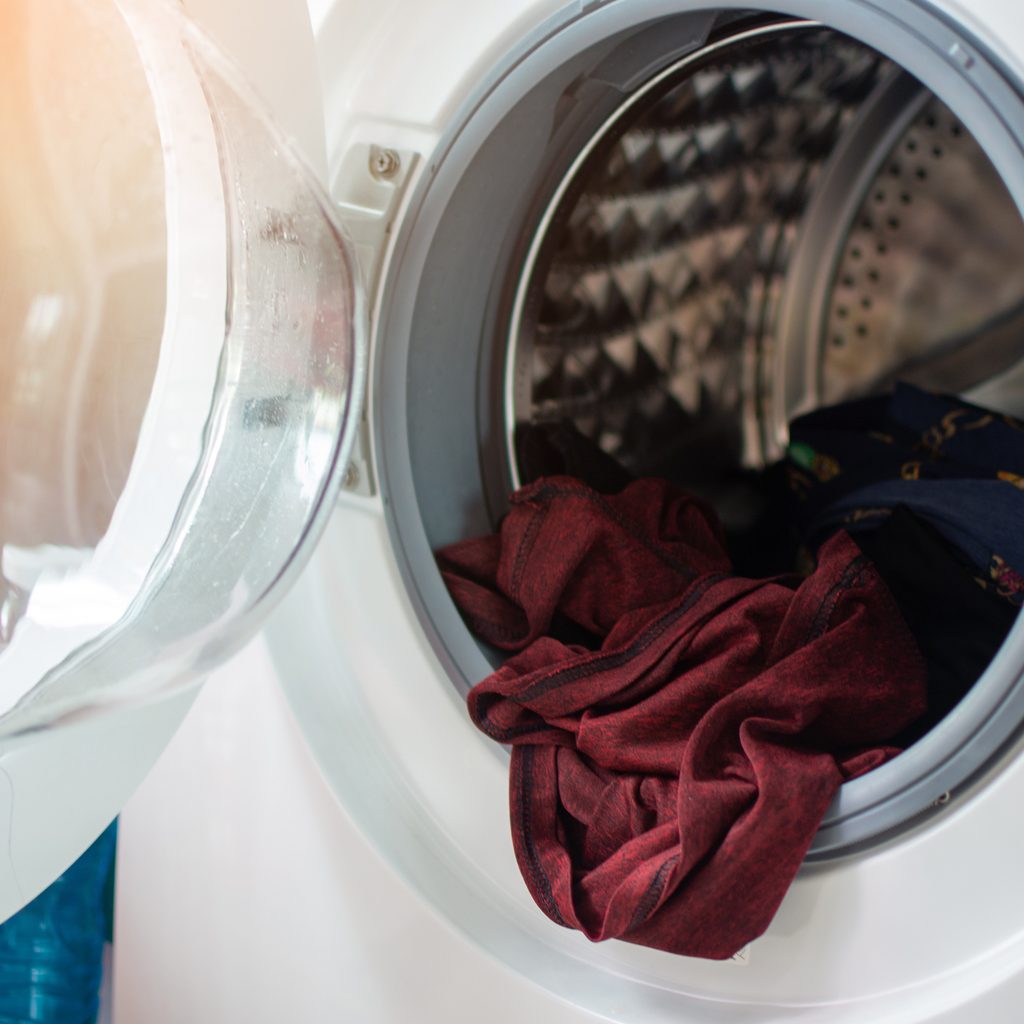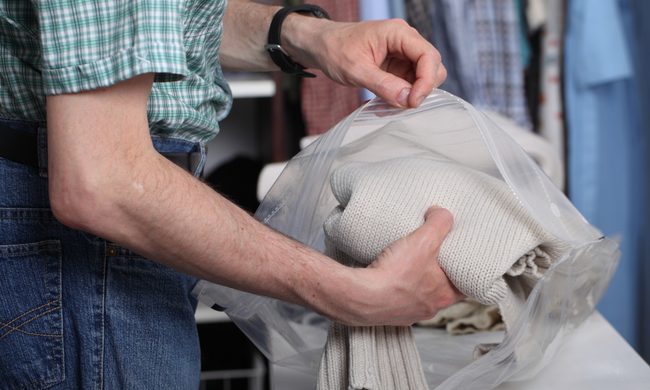
Some of the most important ingredients in your laundry routine are the ones that make your clothes feel soft and smell amazing. Fabric softeners and dryer sheets have reigned supreme for decades, but there’s a new kid on the block when it comes to softening and freshening those fabrics. This is the secret to expertly drying your clothes: wool dryer balls!
If you haven’t heard of wool dryer balls, these handy little puffs are made entirely of natural wool yarn and are sort of look like tennis balls — only a bit bigger. But why would you need balls of wool in your dryer and what do they do? We’re going to talk about how these natural dryer companions work and why you need to add them to your laundry routine.

Do wool dryer balls really work?
The main goals of dryer balls are to soften clothes and dry them faster. But how can a wool ball achieve that? It’s actually quite simple. The wool material rubs against the fabrics while they’re in the dryer. This “brushing” action agitates the fibers of the clothing and makes them softer to the touch — without using chemicals like big brand fabric softeners.
Their fast-drying benefit comes into play when the wool ball bounces around in your dryer with your load of laundry. You see, when wet clothes are placed in the dryer, they stick together and they won’t come apart until the garments are quite dry already. This leads to overdrying, since fabrics have to be subjected to intense heat for so long.
Wool balls, however, jump around in the dryer with your laundry and bounce between garments, effectively pulling them apart and preventing overdry clothing. This also reduces the amount of time and energy used to fully dry clothes, since the dryer balls allow warm air to circulate more freely between fabrics.

How long do wool dryer balls last?
You’re probably wondering, “How many times can wool dryer balls be used?” Here’s your answer: Most dryer ball brands made of wool claim they can last for up to 1,000 cycles in the dryer. That’s several years of continued fabric-softening use! You’ll know your wool balls need to be replaced when they start to fall apart a bit or they begin leaving little wool fibers on your clothes.

How many dryer balls do you put in the dryer?
The number of balls you toss into your dryer depends on the size of the load you’re drying. For smaller loads, 3 or 4 wool balls will work just fine. For large laundry loads, you can use between 6 and 10. Keep in mind that wool dryer balls perform best when you don’t overload your dryer — they need some room to bounce around and do their thing.

Benefits of using wool dryer balls over other fabric softeners
It’s no secret that traditional fabric softener products and dryer sheets have their downfalls. For example, liquid softeners gradually leave a film on your fabrics that eventually makes the garment feel rough or your towels less absorbent. Not only that, but both of these products tend to contain chemicals that could be harmful to you and your family as well as the environment.
Here’s a list of the benefits of using wool dryer balls:
- Natural, simple ingredients
- Eco-friendly laundry product
- Reduces drying time significantly
- Cuts laundry product budget in half
- Eliminates static electricity
- Softens fabrics effectively

How do you recharge wool dryer balls?
While wool dryer balls should last for 1,000 loads of laundry, sometimes they need a little TLC to keep working at their best. They can start to look scraggly, which means the wool fibers are getting stressed and loose from repeated use. When this happens, the dryer balls probably aren’t drying your clothes as fast as they used to.
Recharge — or refresh — them to extend their life. Toss them into a gentle cycle in your washing machine and then dry them on high heat in the dryer. This removes any lint or fiber buildup and rehydrates the dryer balls so they can better absorb water from your clothes in future loads.

Wool dryer ball hacks to up your dryer game
When switching from dryer sheets or fabric softeners to wool dryer balls, sometimes people see some downfalls. For example, other products have artificial fragrances that give their clothes that fresh scent. Other people say wool dryer balls don’t address static cling as well as other products.
The good news is that there are some wool dryer ball hacks that address these issues without adding chemicals and toxins to your laundry loads.
Use essential oils for fragrance
Essential oils can provide some amazing scents, and you can use any of them on your dryer balls to enhance the fragrance of your laundry loads. Simply apply a few drops to each dryer ball and let the ball sit for a few hours to soak up the oils before adding them to a load in the dryer.
Moisten them to avoid static cling
Static happens when the air is dry and lacks any humidity. You can reduce static cling in your clothes by avoiding overdrying your laundry loads and keeping synthetic materials separate from the rest of your clothes in the dryer. For a little added prevention of static, spray or dunk your dryer balls in water before tossing them into the dryer. This increases the humidity in your dryer and removes static cling.
Toss in a ball of aluminum foil
Along with your wool dryer balls, toss a ball of aluminum foil in your dryer. This hack can effectively reduce static cling during the laundry process. Aluminum effectively dissipates the electrical charges that build up on clothes as they tumble in the dryer. The foil ball acts as a conductor, transferring these charges away from the fabric and preventing them from sticking together.
To create the foil ball, simply crumple up a sheet of aluminum foil into a roughly baseball-sized sphere and toss it into the dryer with your wet laundry and your wool dryer balls. As the dryer runs, the foil ball will continually disrupt and neutralize static charges, leaving your clothes static-free and easier to handle. It’s a cost-effective and green cleaning solution that can complement your wool dryer balls and replace the need for chemical-laden dryer sheets. Try this handy trick for a more efficient and sustainable laundry routine!
If you’ve been using fabric softeners or dryer sheets in your laundry, you probably know that the chemicals in these products aren’t the best things for you and your family — not to mention the buildup on your clothes… Why sacrifice your health and the quality of your clothing when wool dryer balls can help achieve the same goal? Give them a try, and you’ll see the difference in your energy bill and the feel of your clothes.



